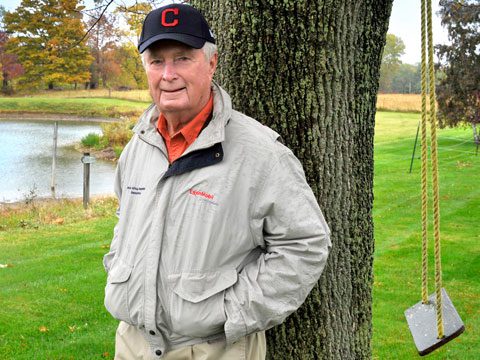
A family legacy of preservation
Last summer, Carter Wilmot and three of his grandchildren were driving by the family’s Broadview Heights pasture when the kids noticed a ewe and two lambs alone in the field. It was odd that the sheep were separated from the herd. Wilmot knew it.
More significantly, so did his grandchildren. Aelish Wilmot, 19, sister Isabelle, 16, and brother John, 13, had spent many summer days at the family farm and around the lambs. “Before I could finish talking, they were running out into the field,” Carter Wilmot said.
The kids discovered the ewe was exhausted and lying down in the pasture, unwilling or unable to move. The lambs, in turn, did not know what to do. With a little nudge from the Wilmot children, the ewe was soon up and moving. She and the lambs then rejoined the herd. “I thought it was telling that (the children) wanted to help,” Wilmot said.
It is equally telling that Carter Wilmot, 81, and his wife, Genevieve, turned down offers from housing developers and preserved the 78-acre farm – one that was established by Henry Carter in 1850 as one of the first settlements of the Western Reserve – for his family. “Four generations before me had sacrificed and held onto this property through good times and bad times,” Wilmot said. “I wanted to protect it from bulldozers and asphalt.”
Today, Carter and Genevieve, who are charter members of the Land Conservancy’s White Oak Legacy Society, live in a house they built on the property. One of their three sons, David, now runs the farm, which is used for timber, sheep and hay.
Aelish Wilmot said the farm will always be part of her life. “I can’t imagine this place not being here – it is so beautiful,” she said. “It would be so bad if it were sold off. You can find a (housing) subdivision anywhere, but places like this are special.”
